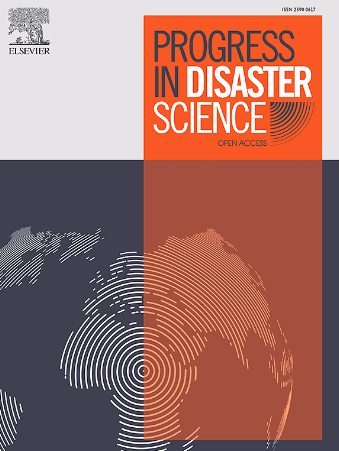Place and space tensions in post-disaster landscapes
IF 3.8
Q3 ENVIRONMENTAL SCIENCES
引用次数: 0
Abstract
Disasters caused by natural hazards and their subsequent recovery processes inevitably transform landscapes in varying degrees. This paper explores two Indonesian cases, the 2004 Indian Ocean Tsunami and the 2010 Mt. Merapi eruption, to show how post-disaster spatial arrangements often reflect a classic dichotomy of space and place. This is evident in post-disaster spatial categorisations and human settlements. However, these spatial stances are not mutually exclusive and can interact to form new hybrids. Post-disaster spatial categorisation is marked by tensions between the government's top-down disaster zoning and the local responses based on their daily sensory and bodily experiences. Post-disaster human settlements reflect a dynamic tension between restoring the former distribution of taskscapes and the sole focus on restoring spaces for living, which in turn leads to complex cultural changes and multiple-distracted landscapes. This analysis of post-disaster landscape change can inform post-disaster management by rethinking vulnerability and resilience and promoting a bottom-up approach alongside the common top-down approach practiced by the government.
灾后景观中的地点和空间紧张关系
自然灾害造成的灾害及其随后的恢复过程不可避免地在不同程度上改变景观。本文探讨了2004年印度洋海啸和2010年默拉皮火山喷发这两个印度尼西亚的案例,以展示灾后空间安排如何经常反映空间和地点的经典二分法。这在灾后空间分类和人类住区方面表现得很明显。然而,这些空间立场并不是相互排斥的,它们可以相互作用形成新的混合体。灾后空间分类的特点是政府自上而下的灾害分区与当地基于日常感官和身体体验的反应之间的紧张关系。灾后人类住区反映了一种动态的紧张关系,即恢复以前的任务景观分布和唯一的重点是恢复生活空间,这反过来又导致了复杂的文化变化和多重分心的景观。这种对灾后景观变化的分析可以为灾后管理提供信息,通过重新思考脆弱性和复原力,并在政府常用的自上而下的方法之外,推广自下而上的方法。
本文章由计算机程序翻译,如有差异,请以英文原文为准。
求助全文
约1分钟内获得全文
求助全文
来源期刊

Progress in Disaster Science
Social Sciences-Safety Research
CiteScore
14.60
自引率
3.20%
发文量
51
审稿时长
12 weeks
期刊介绍:
Progress in Disaster Science is a Gold Open Access journal focusing on integrating research and policy in disaster research, and publishes original research papers and invited viewpoint articles on disaster risk reduction; response; emergency management and recovery.
A key part of the Journal's Publication output will see key experts invited to assess and comment on the current trends in disaster research, as well as highlight key papers.
 求助内容:
求助内容: 应助结果提醒方式:
应助结果提醒方式:


